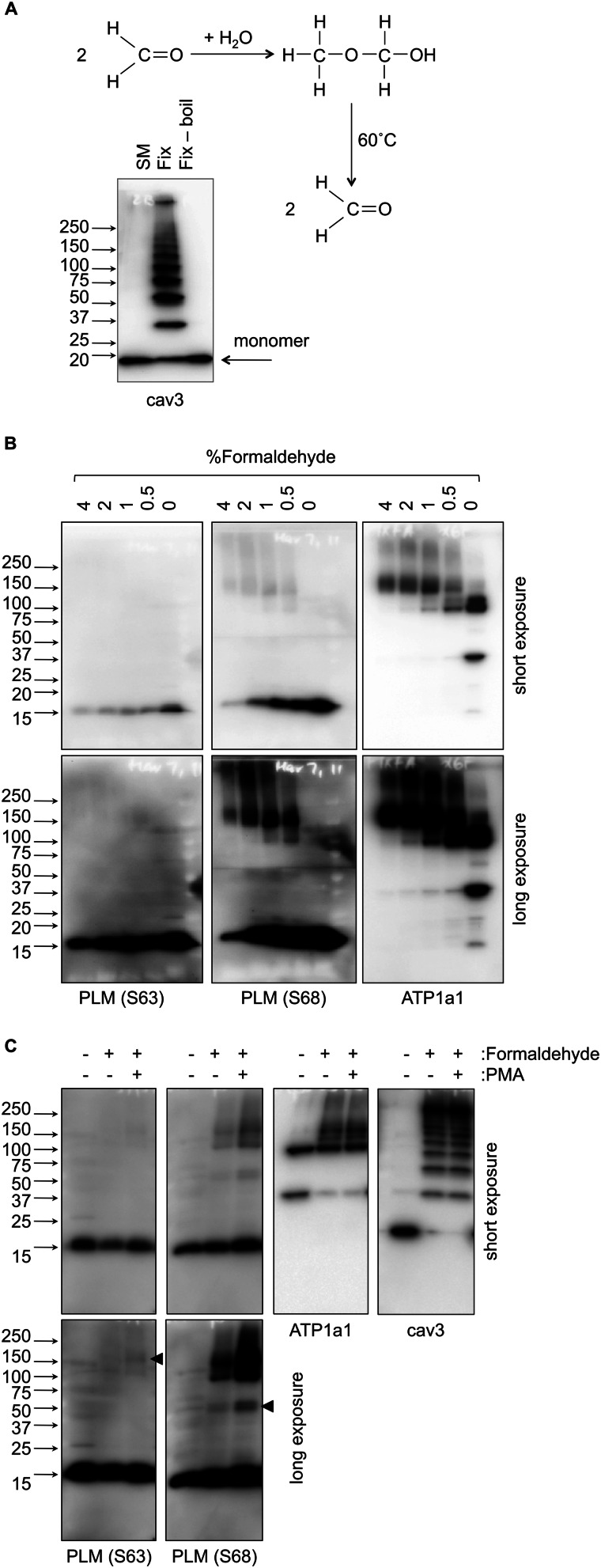FIGURE 5.
Partial formaldehyde fixation to identify multiprotein complexes. A, reaction scheme for formaldehyde monomer (left) in the presence of water to form formaldehyde polymer (right), which is hydrolyzed back to the monomer on heating/boiling. The primary amine reactive formaldehyde is therefore capable of cross-linking primary amines any multiple of 2 Å apart. A representative caveolin 3 immunoblot shows the result of partially fixing ARVMs with formaldehyde. The partially fixed caveolin 3 (cav3) multimer is resolved up to a nonamer, which may be quantitatively retrieved as a monomer upon hydrolysis of the formaldehyde polymer. SM, immunoprecipitation starting material. B, ARVMs were treated with the concentration of formaldehyde indicated above each lane, and immunoblotted as shown. Formaldehyde fixation reveals no interactions for Ser63-phosphorylated PLM (S63). Ser68-phosphorylated PLM (S68) is observed at 100 kDa (likely PLM interacting with the sodium pump α subunit) and 150 kDa (likely PLM-α-β complexes). Short and long exposures of the same immunoblots are shown. C, ARVMs were treated with PMA (300 nm, 10 min), fixed with 2% formaldehyde in the continued presence of PMA, and immunoblotted as shown without heating prior to electrophoresis. Ser63-phosphorylated PLM may be detected at 150 kDa following formaldehyde fixation in the presence of PMA (arrowhead). A species migrating at 50 kDa is immunoreactive with the Ser68-phosphorylated PLM antibody, consistent with the formation of a PLM tetramer (arrowhead).

